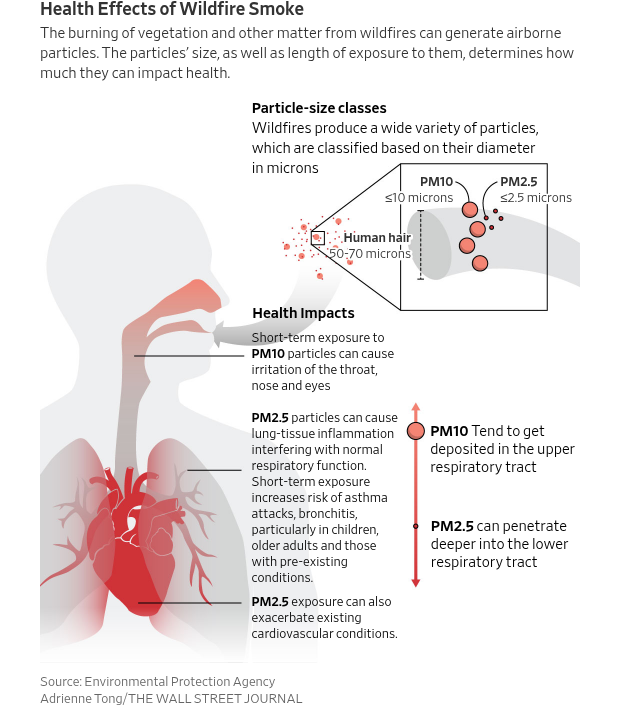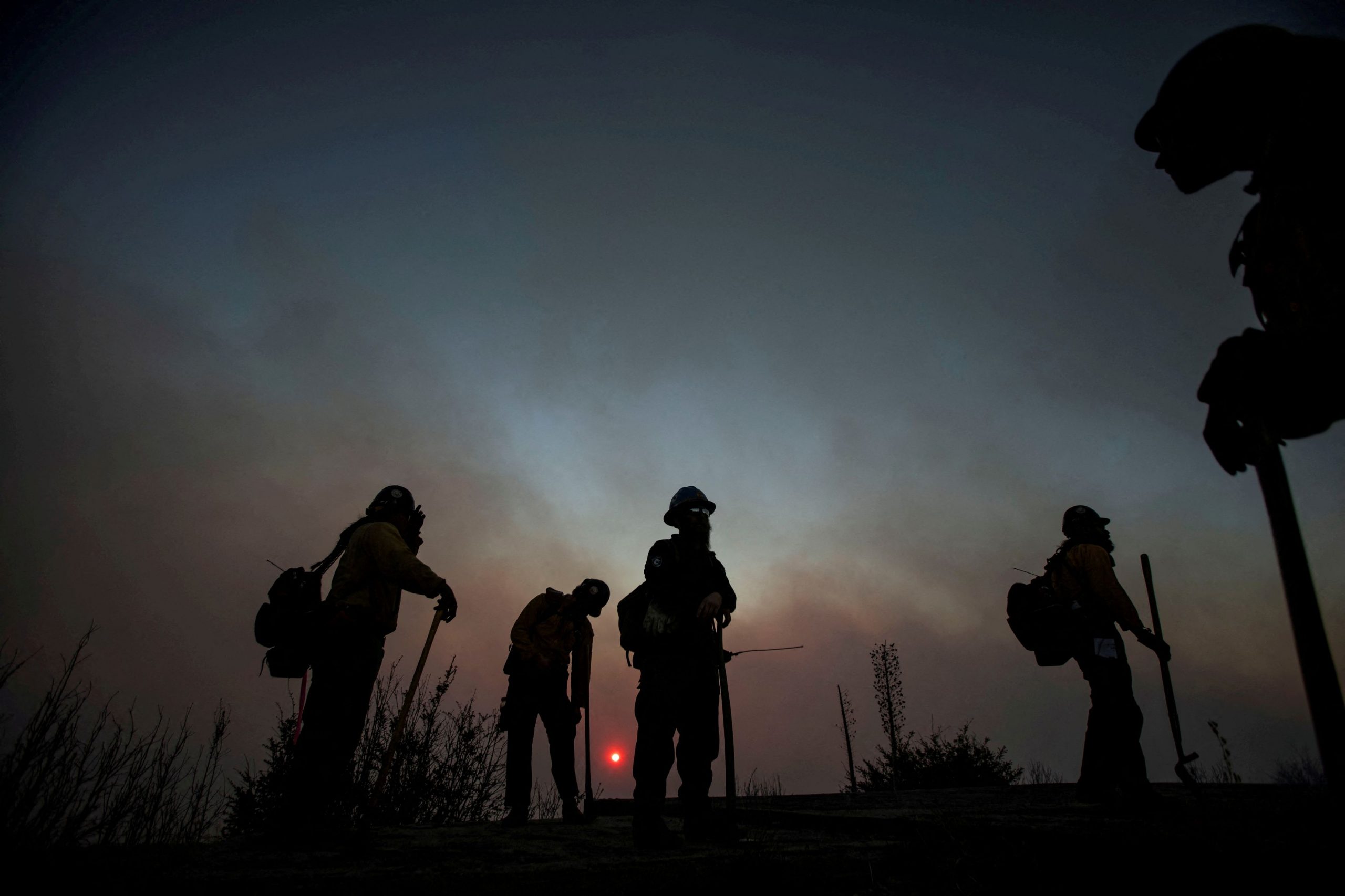Wildfires in California aren’t all wild anymore. They often burn in urban areas, creating a toxic soup of smoke, ash and noxious substances that can be dangerous, even deadly.
In Los Angeles this week, wildfires have burned buildings and roadways. Incinerating the plastics, metals and other materials that these structures are built from releases hazardous chemicals and gases into the air, doctors and public-health experts say.
Wildfires that tear through urban landscapes release chemicals from human-made fuels, construction materials, household products and generate emissions which are chemically different from wildland fires, according to a 2022 report from the National Academies of Sciences, Engineering and Medicine. As of 2010, about 70,000 communities and 43 million homes located in urban areas that abut wilderness were at risk from wildfires, the report stated.
“The combination of wildfire smoke in conjunction with human elements might be even more dangerous,” said Dr. Sanjay Rajagopalan, chief of cardiovascular medicine at University Hospitals Harrington Heart & Vascular Institute in Cleveland. “When you burn plastic, for instance, or you burn rubber, you get some pretty nasty stuff.”
Smoke from the Los Angeles wildfires could have far-reaching effects. Depending on weather patterns and geographic conditions, smoke can travel vast distances. Tens of thousands of Los Angeles County residents have already been ordered to evacuate.
“You can be hundreds of miles away and still have the effects of wildfire smoke on your health,” said Dr. Kari Nadeau, a physician and chair of the Department of Environmental Health at Harvard T.H. Chan School of Public Health who has studied the health effects of wildfires in California.
Microplastics, toxic metals like mercury and lead, carbon monoxide and other poisonous substances have been detected in wildfire smoke, Nadeau said. Chemicals including benzene, which has been linked to leukemia, and dioxins, linked to multiple cancers, have also been found.
One of the greatest hazards of fire smoke is particulate matter, a mix of tiny solid particles and liquid droplets that can lodge deep inside the lungs. The tiniest of these particles, known as PM 2.5, are a minuscule fraction of the diameter of a human hair.
When inhaled, these particles can irritate and inflame the lungs and airways, said Dr. Philip Landrigan, director of the Global Observatory on Planetary Health at Boston College. They are also tiny enough to move into the bloodstream and distribute themselves in other organs of the body, Landrigan said.
Exposure to large amounts of PM 2.5 can be risky no matter where they come from, but research shows that the toxicity of particles from, say, a burning building is different from particles from a wood fire, said Lisa Miller, a wildfire smoke expert at the University of California, Davis School of Veterinary Medicine.
Miller said it is clear that burning plastics and metals are more hazardous than burning trees and shrubs alone, but researchers are still figuring out how much more risky such fires are.
“We can probably tell you it’s a lot more toxic, but just how much, we don’t know at this point,” she said.
Exposure to PM 2.5 during wildfires is linked to an increased risk of cardiac arrests, heart failure, asthma attacks, strokes and other diseases, research shows.

Children, older adults and people with lung or heart disease are at a higher risk of getting sick. Pregnant women are at an increased risk of early labor and bearing children with low birthweight. But even healthy, nonpregnant adults could be affected by the smoky conditions —and those risks could linger long into the future, doctors warn.
“Exposure to wildfire smoke can contribute to chronic lung disease and cardiovascular disease. It can even increase the risk of dementia ,” said Dr. MeiLan Han, a professor of medicine at the University of Michigan who specializes in pulmonary health.
Han advised people to limit outdoor activity when air quality is poor. If you have to go outside, N95 masks, worn correctly , offer a first layer of protection against smoke and particulate matter, she said.
To improve the air quality indoors, doctors recommend using air purifiers fitted with filters with a MERV rating of at least 13 . If driving in smoky conditions, use the air recirculation button to prevent contaminated air from coming inside the car.
People experiencing breathing issues after spending time in a smoky place, or who feel sudden dizziness which could indicate a stroke, should seek medical attention, doctors say. Chest tightness or tingling in the arms or fingers could be symptoms of a heart attack and would warrant a 911 call or emergency room visit.
A June 2024 study found that more than 50,000 deaths from 2008 to 2018 in California were attributable to PM2.5 exposure from wildfire smoke. Another study last year estimated that 1.53 million deaths annually worldwide between 2000 and 2019 were due to exposure to landscape fires including wildfires.
Write to Dominique Mosbergen at dominique.mosbergen@wsj.com and Nidhi Subbaraman at nidhi.subbaraman@wsj.com



